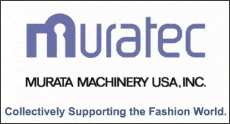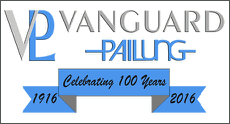
Posted September 21, 2017
(Editor’s note: Following is a Q&A with Robert McCurdy, president of GTI Graphic Technology Inc., a Newburgh, N.Y.-based supplier of tight tolerance lighting systems and services for critical color viewing, color communication and color matching assessment. His answers come in response to questions posed by eTC Publisher Devin Steele. The company will exhibit at next week's IFAI Expo in New Orleans.)
eTC: Bob, please provide a brief snapshot of the company’s founding and its original focus.
McCurdy: GTI was founded in 1975 by my father, Fred McCurdy. Prior to starting GTI, he served in the Air Force and worked for MacBeth Corporation. Fred believed that a new technology to produce artificial daylight could be more economical while still maintaining a high-level of quality.
He built GTI around this new technology and we became the leading designer and manufacturer of color viewing and inspection systems. Unfortunately, Fred passed away a few years ago, and today the company is run by me and Lou Chappo, a longtime family friend and one of the original employees of the company.
Today, the company focus remains the same – to make the best visual color viewing and inspection systems on the market at an affordable price.
eTC: Tell us about the company dynamics and other interesting tidbits.
McCurdy: All of GTI’s engineering, manufacturing and business operations are based at our 30,000 square foot headquarters in Newburgh, N.Y. The company also has sales and distribution offices in Germany and the United Kingdom.
We are represented by a strong dealer network throughout the rest of the globe. About 25 percent of the company’s sales come from international markets. Several industry-leading companies also sell our product under their label.
GTI employs about 35 people and many have been with the company for 20 years or more. GTI prides itself on the skill level and dedication of its employees – they know their job, the business, and are dedicated to the company’s success.
eTC: Please tell us more about the market segments you serve, textiles and otherwise.
McCurdy: We serve three unique markets:
Graphic arts & photography
Our Graphiclite® family of D50 daylight products serves this market. All Graphiclite products comply with ISO 3664:2009, the international standard for viewing in graphic technology and photography viewing conditions.
Industrial color markets
This segment is supported by our CMlite family of D65 daylight products. It includes textiles, plastics, paint, automotive, food, retail and other industries where the appraisal of color of opaque materials is important. GTI’s CMlite products comply with the ASTM1729-2009, AATCC Evaluation Procedure 9-2011, SAE J361, ISO 3668, and BS0950 Part 2 standards.
Quality engineering
Our QElite product line is designed for companies that require an accurate and consistent light source during the developing, testing and manufacturing of their product.
We offer a wide range of products to these three markets including:
-
Desktop systems;
-
Floor models, with optional storage cabinets;
-
Overhead and wall mounted luminaires;
-
Color harmony rooms;
-
Relamping programs;
-
Custom designs; and
-
Audit and certification programs
eTC: Are your systems cross-functional, meaning can they be used across different market segments as is, or are they customized for each process?
McCurdy: What makes a product unique to a market segment is its light source(s) and size of the viewing area. Viewers for the graphic arts segment primality uses D50 daylight and the viewing area is designed to hold sheets of paper – while industrial color viewers have multiple light sources, use D65 daylight and the viewing area is designed to hold dimensional objects. Many customers do utilize a dual source viewing station with D50 and D65.
eTC: Please talk about some of your product specialties, differentiators and why people choose GTI systems and services.
McCurdy: What is unique about GTI is that we are 100 percent dedicated to designing and manufacturing visual color inspection systems.
We are differentiated from our competitors because of the range of our product line – we offer everything from small desktop viewers to color harmony rooms. Because we do all fabrication at our factory in Newburgh and our engineers are able to speak directly to the end user, we able to offer customer specific solutions very quickly if needed.
Service is also a strong factor. If you call our office a person will answer the phone and in the rare case you have a problem will work with you until it is solved. Our products also require very little maintenance. To maintain compliance relamping after 2500 hours of use is the only service required. There is no need for regular recalibration by a serviceman with a Spectroradiometer.
The bottom-line is that we build a good product at a good price, and we stand behind every product we make.
eTC: Please explain the critical nature of your specialty – ensuring accurate color – in various applications.
McCurdy: Color is a crucial component of product design, manufacturing and marketing. It is key to brand identity for many companies. The perception of color is subjective and is significantly affected by physical viewing conditions. A small variation in lighting can lead to significant shifts in a color’s appearance.
It is for this reason that any manufacturer that requires consistency of color, both in the batches of materials that come from suppliers and in the products they create, should be using a light booth that conforms to industry standards.
AATCC Evaluation Procedure 9-2011 has established lighting standards and procedures for visual assessment of color differences of textiles. This standard requires that viewing conditions meet strict specifications with regard to color quality, light intensity, evenness of illumination, viewing/illumination geometry and surround conditions. All GTI viewers meet these standards.
eTC: How has the company changed over the last decade, and what are the drivers?
McCurdy: Key changes over the last 10 years include:
-
Introduction of new products such as color harmony rooms, wall viewing systems and soft proofing solutions;
-
The Simultaneous Color Viewer was introduced and sells well in the textile segment. It allows for the side-by-side viewing of a color sample in four unique light sources;
-
The development of our e-commerce storefront; and
-
Our growth in the industrial color markets – which continue to grow.
I believe the key driver to our success is our customers. We have many repeat customers and often receive referral leads. They say your best advertisement is a happy customer and we have seen that work.
eTC: With domestic manufacturing (especially textiles) making something of a comeback, has that been reflected in your business and have you made a renewed focus in the textile arena?
McCurdy: Yes, GTI has experienced growth in the textile segment and anticipates further growth. We have and plan on continuing to participate in the AATCC conference, Techtextil trade show and IFAI Expo trade show. Nick Lena, our director of Color Technology, actively participates in AATCC and other standards organizations.
eTC: What are some of the types of companies that use your equipment and systems in textiles?
McCurdy: To properly communicate color, all parties in the supply chain need to evaluate color in the same lighting conditions. Our sales and our OEM partner sales include designers, mills, coating and pigment suppliers, retailers, clothing manufacturers and service companies.
eTC: Can you offer some examples into the types of processes textile manufacturers, designers, etc. use your equipment for?
McCurdy: If color is an important part of their business they should be using a light booth to evaluate color. It should be used to inspect incoming pieces, to confirm that finished goods match the set color standard, to check color harmony between different elements, and to test for metamerism.
eTC: Please comment on the importance of U.S. manufacturing, from your perspective.
McCurdy: Owning the entire process from concept to manufacturing at our headquarters in Newburgh, N.Y., allows us to serve the NAFTA market with fast lead times and custom products when needed. Many U.S.-based customers also like the idea of purchasing from a U.S. supplier.
eTC: I see your team members at a lot of textile and related trade shows and conferences. Please speak to the importance of being engaged with these audiences.
McCurdy: Trade shows are an important part of our marketing strategy. They provide us with an opportunity to meet one-on-one with prospects and customers. Our presence raises our brand awareness into this segment for us.
eTC: How long have you been with the company? How long have you served as president?
McCurdy: I joined GTI in March of 1981, right after my graduation from Colby College in Maine. I have served as president since September of 2014.
eTC: What is your management philosophy?
McCurdy: Fred, my father, founded GTI and was successful with the business because of his high level of energy, positive thinking and can-do attitude. He served as a mentor to me, Lou and many others. We plan to continue to operate the business and approach our customers, employees and business partners by the standards he set. By doing this I am certain we will continue to successfully grow the business.
eTC: Can you tell me about the management team, as well as the full GTI team in terms of how the contribute to the company’s success?
McCurdy: Lou is our executive vice president and has been with the company since 1978. He and I run the company together. Lou primarily handles the manufacturing and product design side of the business.
Nick is our director of color technology. He has an impressive resume of industry experience going back 40 years. He is active on industry standard committees.
Fred’s wife, Betsy, is still active in the business and serves as the controller.
We are a small company, people know what their responsibilities are and do their job well. At the same time people have been crossed trained to cover for others during busy periods and when someone is enjoying a vacation.
eTC: What is your vision for the future of the company and what you see coming down the pipeline that will reflect your business?
McCurdy: Our vision is continued steady growth across several industries, including textiles, automotive, packaging, coatings and more.
Concerning technology, we will continue to adapt our products to meet the market’s changing needs. I also believe that LED lamp technology will start playing a larger part in the industry as it stabilizes, overcomes quality control issues and cost comes down.
For more information, stop by GTI Graphic Technology Inc.’s booth (A319) at next week’s IFAI Expo in New Orleans, visit its website or call +001 (845) 562-7066.
IFAI Expo exhibitor
GTI has lit the way for industry for more than four decades
 |
|---|
 |
 |
 |
 |
 |
 |


"What is unique about GTI is that we are 100 percent dedicated to designing and manufacturing visual color inspection systems. We are differentiated from our competitors because of the range of our product line."
Bob McCurdy
President, GTO













